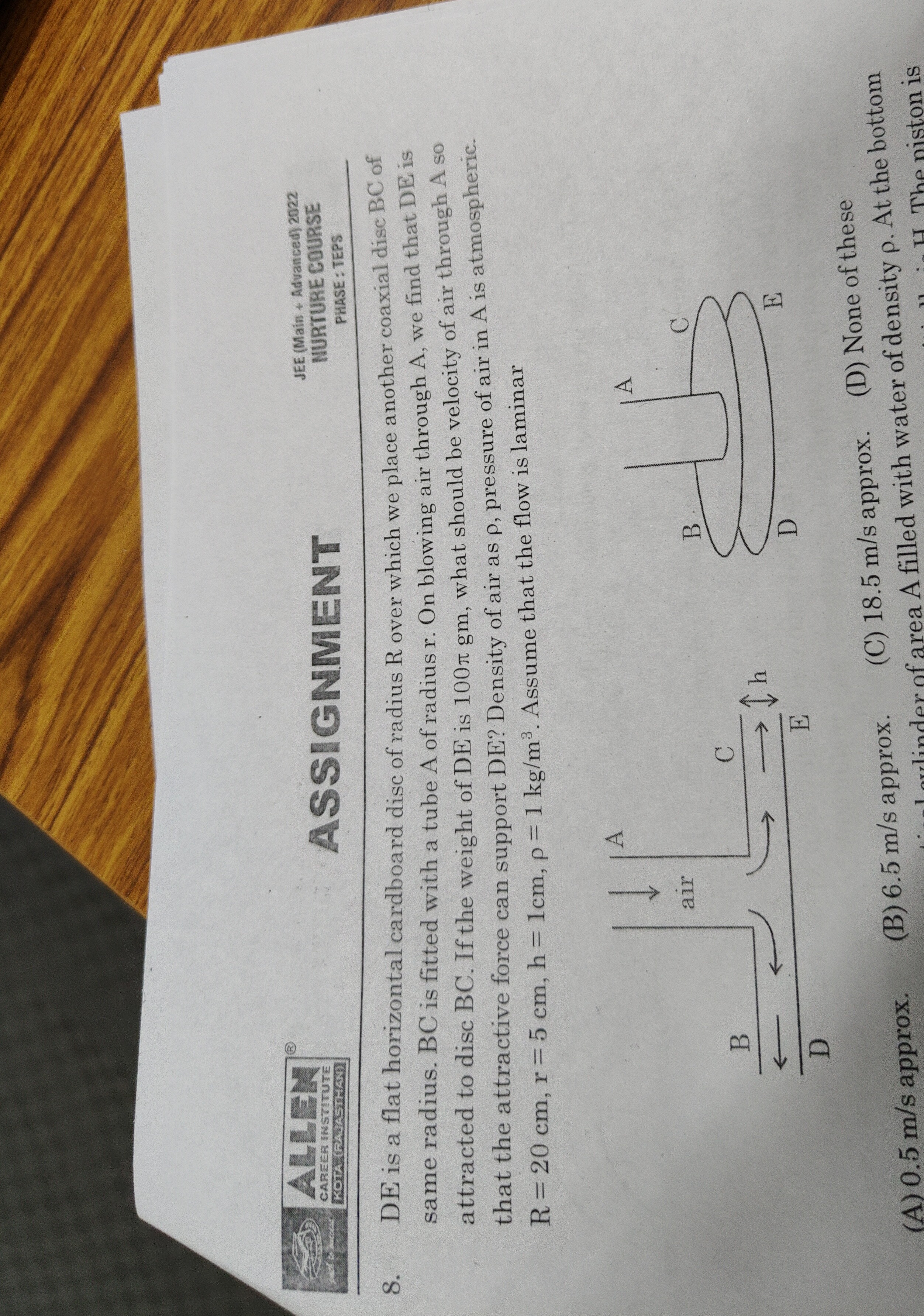Question
Question: DE is a flat horizontal cardboard disc of radius R over which we place another coaxial disc BC of sa...
DE is a flat horizontal cardboard disc of radius R over which we place another coaxial disc BC of same radius. BC is fitted with a tube A of radius r. On blowing air through A, we find that DE is attracted to disc BC. If the weight of DE is 100π gm, what should be velocity of air through A so that the attractive force can support DE? Density of air as ρ, pressure of air in A is atmospheric. R = 20 cm, r = 5 cm, h = 1cm, ρ=1kg/m3. Assume that the flow is laminar

0.5 m/s approx.
6.5 m/s approx.
18.5 m/s approx.
None of these
6.5 m/s approx.
Solution
The attractive force supporting the disc DE is due to the pressure difference between the atmospheric pressure above DE and the reduced pressure in the region between discs BC and DE. Air blown through tube A creates a radial flow, and according to Bernoulli's principle, pressure decreases where velocity is higher.
The velocity of air at a radial distance x from the center can be approximated as v(x)≈2xhr2v, where v is the velocity of air exiting tube A and h is the gap height.
A more rigorous derivation for the upward attractive force Fup in such a configuration is given by: Fup=4h2πρr4v2ln(rR)
Given values: Weight of DE, W=100π gm. Converting to kg: m=100π×10−3 kg=0.1π kg. Using g=9.8 m/s2, the weight is W=mg=0.1π×9.8=0.98π N. Radius of disc DE, R=20 cm=0.2 m. Radius of tube A, r=5 cm=0.05 m. Gap height, h=1 cm=0.01 m. Density of air, ρ=1 kg/m3.
Substitute these values into the force equation: Fup=4×(0.01)2π×1×(0.05)4×v2ln(0.050.2) Fup=4×10−4π×6.25×10−6×v2ln(4) Fup=4π×6.25×10−2×1.38629×v2 Fup≈0.02166πv2
To support the disc, the attractive force must equal the weight: Fup=W 0.02166πv2=0.98π v2=0.021660.98≈45.24 v=45.24≈6.726 m/s
This value is approximately 6.73 m/s, which is closest to option (B) 6.5 m/s.
